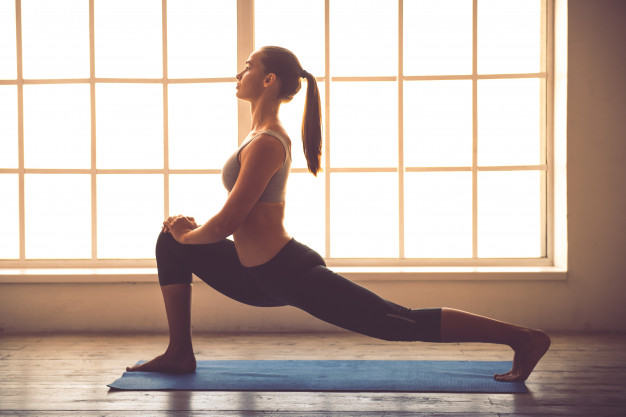admin
October 24, 2024
Differences Between Power Yoga and Vinyasa Yoga

Yoga is a practice that has gained popularity over the last few decades and has evolved in its style and scope for a very diverse set of needs. From so many styles, one eventually needs to navigate a litany of choices to discover what’s best suited for them. This article focuses on two very dynamic forms of yoga: Power Yoga and Vinyasa Yoga. If you happen to be a practitioner looking to enhance your yoga journey, be it by getting in the best shape, or just looking forward to a meditative experience, then you must comprehend which one it is. The approach will enlighten you about these styles and how each practice will help you.
Introduction to Power Yoga
Power Yoga is a fast-paced, movement-based method of yoga that originated in the United States at the end of the 20th century. Taking roots from Ashtanga Yoga, it modifies the traditional poses to provide a more demanding workout to the requirements of modern fitness enthusiasts. It has its basis in the structured sequences of Ashtanga but in a way creates strength, stamina, and flexibility without the strict adherence found in the eight-limb path of yoga.
Anxiety can significantly affect an individual and many facets of life. It has implications on the quality of work, human relationships, and the quality of life. Fear or apprehension, which can be cumulative, places patients with anxiety in avoidance behaviors, thereby heightening feelings of alienation and stress.
Characteristics
Power yoga contains many demanding poses that literally mean strength with power yoga. It focuses on the strength and endurance needed when executing these poses. These sequences were designed to keep the heart rates up and to enhance muscle strength. Some popular power yoga poses are Chaturanga, Warrior II, along with various balance poses, held for prolonged intervals, which bring the strength of stability.
The Power Yoga classes basically are focused less on breath work and philosophical teachings and look more toward the physical aspects of the practice. This way, it’s conceivable for people who wish to have a workout to complement their routines.
Target Group
Therefore, Power Yoga is the best form of exercise for any person who wishes to have a more intense workout, which is mostly preferred by athletes, bodybuilders, and other fitness lovers. Any individual who likes dynamic classes that will help him or her develop their capabilities physically will find Power Yoga the most beneficial. To an athlete, it’s the level of intensity and strength that Power Yoga will require for the physically rewarding experience, hence why it’s continually involved in a discussion on Power Yoga vs. Vinyasa Yoga.
Vinyasa Yoga Overview
Definition and Origins
Vinyasa is “flow” yoga, a style that connects breath with movement. Developed from traditional Hatha and Ashtanga Yoga, Vinyasa unfolded as more fluid and creative expression of practice. It resulted in various sequences and transitions that have created a sense of rhythm and harmony.
Characteristics
The only characteristic of this type of yoga is flowing without moving stops, so one can move through sequences, mostly from Sun Salutations. This style invokes the application of Ujjayi breathing-technique that influences concentration and keeps meditative state during the practice. Transitions from one to another pose are smooth and intentional; there’s never a break in the flow of energy that creates awareness and being.
These classes offer something new every time, and thus, the teacher can weave and design for different experiences. The connection of breath and movement is a central and holistic approach towards wellness. Vinyasa can prove its superiority in the Power Flow vs. Vinyasa Yoga debate by its fluidity and flexibility.
Target Audience
It is one that allows all practitioners, and everyone can attend whether they are beginners or advanced yogis. For those who are interested in mindfulness and flexibility, and indeed, a more balanced practice, this is a very attractive one. Since it focuses on breath and flow, it attracts those who are seeking a meditative, introspective experience leading to general well-being and calmness.
What are the most substantial differences between Power Yoga vs Vinyasa Yoga?
Intensity and Physical Demands
The most striking distinction between Power Yoga vs Vinyasa Yoga lies in the physically rigorous demands and intensity of each. Power Yoga is for many people considered a more intense workout. It pushes into someone’s limits on every level of physicality with a series of rigorous poses and sequences. On the other hand, Vinyasa offers a flowing pace, permitting variations as necessary and as one might need it, guided by one’s own needs and levels of energy. Although both are pretty fantastic from a physical perspective, Power Yoga tends to be more intense than Vinyasa yoga and thus not as well suited for all.
Form and Sequencing
Another characteristic difference between these two styles is the form and sequencing of classes. Power Yoga tends to be a more rigid practice with a more ordered routine, often utilizing specific sequences designed to achieve strength and endurance. On the other hand, the other type encourages creativity and spontaneity. Students can have different sequences instructed to them each day which encourages exploration and keeps the practice novel and exciting. Power Flow vs. Vinyasa Yoga is a great comparison because it shows how well one may choose either.
Breath and Mindfulness
Breathing coordination is a part of the yoga practice, but emphasis on breath varies significantly between the two. Power Yoga poses focus very less on breath alignment and instead puts more focus on the physical effort in the poses. On the other hand, in Vinyasa yoga, breath becomes an anchoring factor; one inhales and exhales through movements. This helps in mindfulness, thereby making it a more meditative practice.
Philosophical Elements
Each style also contains philosophical elements that are very different from each other. Power Yoga is generally more of a fitness type in which obtaining the outcomes is more than just for physical results but also achieving cardiovascular fitness. The philosophies do appear in some practice, though they usually take a secondary role to the physical exercise. Whereas, the other embraces an air of mindful and meditation practice and invites practitioners to study beyond just the physicality of the poses themselves. It will connect one to himself and the world at large; this is what makes Power Yoga poses different.
What are the Benefits of Power Yoga?

Power yoga is renowned for boosting immunity and moving quickly. In addition to these, power yoga offers the following advantages:
Physical Benefits
It provides numerous benefits, with the improvement of strength, endurance, and flexibility. The dynamic nature of the practice promotes cardiovascular health, thus it is a great calorie burnout and fitness maintenance workout. Challengeable benefits of Power Yoga poses such as Warrior and Triangle invite muscle engagement and lead to a toned physique and enhanced physical capabilities.
Mental Benefits
In addition to the physical rewards, Power Vinyasa also has mental rewards. This would mean having the focus on challenging postures might help provide relief in stress while improving concentration because the practitioner must stay present and attentive all throughout the practice. That can help someone be more confident as they overcome difficult postures.
Who’s best suited to practicing Power Yoga?
Power Yoga suits an athlete and all those workout enthusiasts; it caters to an aspirant who seeks and wants to practice some strict regimen that trains the body with sheer strength and endurance. Those trying to improve themselves will find this great as it gives a challenging yet rewarding experience that stands out in the debates on Power Yoga vs Yoga.
What are the Benefits of Vinyasa Yoga?

Physical Benefits
It creates flexibility and balance because it constitutes movements and poses, which change with each position. The full-body exercise promotes proper alignment and stability and helps practitioners work out strength in an all-rounded way. At the same time, as practitioners move around the varied sequences, they engage several muscle groups toward general physical wellness.
Mental Benefits
It can also be highly useful for mental benefits, such as enhancing one’s mindfulness or ability to help reduce stress. The attention placed on breathwork and movement can promote a sense of meditation to the practitioner, allowing more connection with their body and mind. This facilitates an emotional outlook on life, leading to a sense of calm and clarity.
Who Would Vinyasa Yoga Be Good For?
It is suitable for all and thus a great option for anyone, especially beginners, and those looking for a more meditation-based practice. Whichever the case, it will be to your advantage if you’re interested in elevating your well-being, a beginner toward mindfulness, or a practicing yogi interested in the therapeutic value of yoga. Among Power Yoga vs Vinyasa Yoga, the latter is accessible for all, hence a clear winner for this scenario.
Yoga vs Power Yoga - Which is Better for You?
Personal Objectives and Fitness Abilities
Power Yoga and Vinyasa Yoga are two of the most common types. While it is up to personal objectives and fitness levels for a person to decide whether to choose Vinyasa and Power yoga, what do you want to achieve through your practice? Want a challenge workout that’s there to help you build strength? Well then Power Yoga could be more suitable. Want to cultivate mindfulness as well as flexibility? You will be perfect for practicing Vinyasa.
Class Availability and the Styles of Instructors
Class availability and instructor styles can also play a role. You will want to investigate local studios or online classes that teach both styles and consider the teaching methodologies of various instructors. Finding a class that you really like will make a big difference in your experience of yoga.
Experimentation
At last, don’t be afraid to try out both styles. Trying different classes will help you determine which practice resonates more with your body and mind. Exploring both the types will give you a holistic yoga experience because you will be taking care of your different needs and preferences.
Conclusion
Generally, the yoga modalities belong to two different categories with their advantages and description when the practitioners use them. Power Yoga is predicated on outer strength and intensity, whereas Vinyasa yoga other is related to synchronicity with breath and movement, leading to mindfulness and flexibility. A possible way of deeper understanding of yoga can be the exploration of both practices. Finally, it will be important to decide which suits you best as you establish a fulfilling yoga journey, particularly if it is a balancing act between Power Yoga vs Vinyasa.
Frequently Asked Questions
No, while both are active yogas, Power Yoga is more in terms of intensity and fitness, and Vinyasa Yoga is more focused on the connection between breath and movement.
Difficulty can vary, for Vinyasa Yoga may be quite challenging, depending on the instructor’s sequencing and one’s level of experience, yet at the same time offers open avenues for modification and adaptation.
Vinyasa Yoga might be a little bit challenging for some practitioners with its fast pace which may sometimes cause poor alignment if one isn’t really aware of what is happening to his body. Just listen to your body.
Many students are able to practice Vinyasa Yoga safely every day. It stretches and strengthens the muscles, so it is accessible for daily practice. However, please listen to your body and avoid pushing it too far. Other types of yoga or days off may really enhance this practice.



